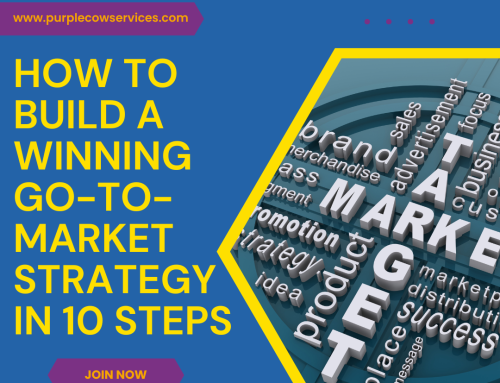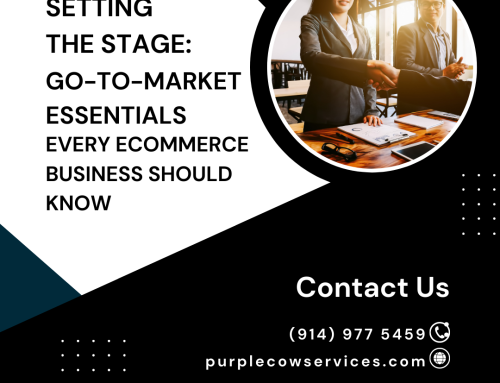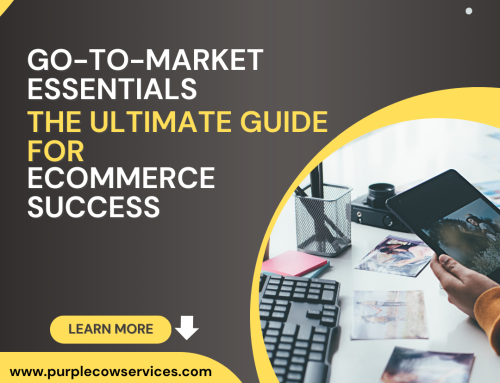In today's highly competitive business landscape, having a well-defined and effective go-to-market strategy is crucial for success. A go-to-market strategy encompasses the plan and actions taken to introduce a product or service to the market, attract customers, and drive revenue.
Share This Story, Choose Your Platform!
In this blog post, we will delve into the key elements of a winning go-to-market strategy and explore how it can unlock tremendous growth opportunities for your business.
Understanding Go-To-Market Strategy
A go-to-market strategy is a comprehensive plan that outlines how a company will reach its target audience, communicate its value proposition, and generate demand for its offerings. It involves aligning marketing, sales, distribution, and customer support efforts to create a seamless customer experience. A well-crafted go-to-market strategy provides a roadmap for launching new products, entering new markets, or expanding existing market share.
The Key Elements of a Winning Go-To-Market Strategy
Market Research and Customer Segmentation
Before developing a go-to-market strategy, it’s essential to conduct thorough market research to understand your target audience, market trends, and competitive landscape. Identify customer segments based on demographics, psychographics, and buying behaviors. This segmentation will help tailor your messaging and positioning to resonate with specific customer needs and preferences.
Value Proposition and Differentiation
Craft a compelling value proposition that clearly articulates the unique benefits and value your product or service offers to customers. Differentiate yourself from competitors by highlighting your key advantages and addressing pain points that your target audience faces. Your value proposition should be concise, impactful, and easily understood by your target market.
Product Positioning and Messaging
Define how your product or service will be positioned in the market and develop consistent messaging that communicates your value proposition effectively. Your messaging should emphasize the benefits and outcomes customers can expect from using your offering. Tailor your messaging to specific customer segments and align it with their needs, aspirations, and pain points.
Channel Strategy and Distribution
Determine the most effective channels to reach your target audience and deliver your offering. Consider factors such as customer preferences, buying behaviors, and market reach. Develop a channel strategy that includes both online and offline channels, such as direct sales, distributors, resellers, or online marketplaces. Ensure that your distribution channels align with your target customers’ purchasing habits and provide a seamless buying experience.
Pricing and Revenue Model
Establish a pricing strategy that reflects the value delivered by your product or service and aligns with your target market’s willingness to pay. Consider factors such as competitive pricing, customer affordability, and profitability. Choose a revenue model that best suits your business, whether it’s one-time purchases, subscriptions, freemium, or a combination. Continuously assess and adapt your pricing strategy in response to market dynamics and customer feedback.
Marketing and Promotion
Develop a comprehensive marketing plan that encompasses various channels and tactics to create awareness, generate leads, and drive customer acquisition. Leverage digital marketing strategies, content marketing, social media, SEO, and paid advertising to amplify your message and attract target customers. Align your marketing efforts with your target audience’s preferences and behaviors to maximize reach and engagement.
Sales Enablement and Training
Empower your sales team with the knowledge, tools, and resources they need to effectively sell your product or service. Provide comprehensive training on product features, benefits, competitive differentiators, and objection handling. Develop sales collateral, presentations, and demos that align with your messaging and value proposition. Continuously assess and optimize your sales processes to improve efficiency and effectiveness.
Customer Success and Support
Provide exceptional customer experiences to foster loyalty and advocacy among your customers. Develop a customer support strategy that ensures prompt response to customer inquiries, quick resolution of issues, and proactive engagement. Provide resources and self-service options to empower customers to find answers and troubleshoot on their own. Continuously gather customer feedback and use it to improve your products, services, and overall customer experience.
Implementing a Winning Go-To-Market Strategy
Now that we have explored the key elements of a winning go-to-market strategy, let’s discuss how to effectively implement it to drive business growth.
Develop a Detailed Action Plan:
Translate your go-to-market strategy into a detailed action plan with clear objectives, timelines, and responsibilities. Break down the plan into actionable tasks and milestones to ensure accountability and progress tracking.
Collaborate Across Departments:
A successful go-to-market strategy requires collaboration and alignment across departments, including marketing, sales, product development, and customer support. Foster open communication and cross-functional collaboration to ensure everyone is working towards the same goals.
Test and Iterate:
Monitor the performance of your go-to-market strategy and be willing to adapt and iterate based on feedback and market dynamics. Conduct A/B testing, gather data, and analyze the results to identify areas for improvement and optimization.
Leverage Technology and Automation:
Invest in marketing automation, CRM systems, and analytics tools to streamline processes, track customer interactions, and gain actionable insights. Use technology to automate repetitive tasks and free up time for strategic initiatives.
Measure and Track Key Metrics:
Define key performance indicators (KPIs) that align with your go-to-market strategy objectives and regularly track and measure them. This includes metrics such as customer acquisition cost (CAC), customer lifetime value (CLV), conversion rates, and revenue growth.
Stay Agile and Responsive:
The business landscape is constantly evolving, so it’s essential to stay agile and responsive. Monitor market trends, competitive activities, and customer feedback to identify emerging opportunities or challenges. Prepare yourself to adapt your strategy and tactics accordingly.
Case Study: Success Story
To illustrate the power of a winning go-to-market strategy, let’s explore a real-life success story.
Company X, a software-as-a-service (SaaS) startup, aimed to disrupt the project management market with its innovative collaboration platform. They crafted a go-to-market strategy that focused on targeting small to medium-sized businesses in the technology sector.
Through extensive market research, Company X identified pain points faced by their target audience, such as inefficient communication, lack of visibility, and scattered project information. They developed a value proposition that highlighted their platform’s ability to streamline collaboration, improve team productivity, and enhance project visibility.
Company X employed a multi-channel approach, leveraging digital marketing, content marketing, and targeted advertising to create awareness and generate leads. They positioned themselves as thought leaders in project management through insightful blog posts, webinars, and social media engagement.
Their sales team received comprehensive training on the platform’s features, benefits, and competitive differentiators. They utilized personalized demos and case studies to showcase the value of their solution to potential customers.
By closely monitoring key metrics and customer feedback, Company X made data-driven decisions to optimize their pricing, messaging, and channel strategies. They continuously iterated their go-to-market approach, addressing customer pain points and fine-tuning their value proposition.
As a result of their winning go-to-market strategy, Company X experienced rapid customer acquisition and revenue growth. They established themselves as a leading player in the project management market, attracting both startups and established businesses.
Conclusion
A winning go-to-market strategy is a powerful tool for businesses to effectively introduce their products or services to the market, attract customers, and drive revenue growth. By understanding your target audience, crafting a compelling value proposition, developing a robust marketing and sales plan, and delivering exceptional customer experiences, you can master the game of go-to-market strategy and elevate your eCommerce business.
Stand out from the herd with our Purple Cow’s go-to-market strategy! Unleash the power of a winning plan that sets your business apart. Through market research, compelling differentiation, precise positioning, and strategic marketing, you’ll attract your target audience and drive revenue growth. Our proven approach ensures you master the game, leaving competitors in awe. It’s time to embrace the extraordinary and achieve extraordinary results with Purple Cow.
Share This Story, Choose Your Platform!
In This Blog:

















